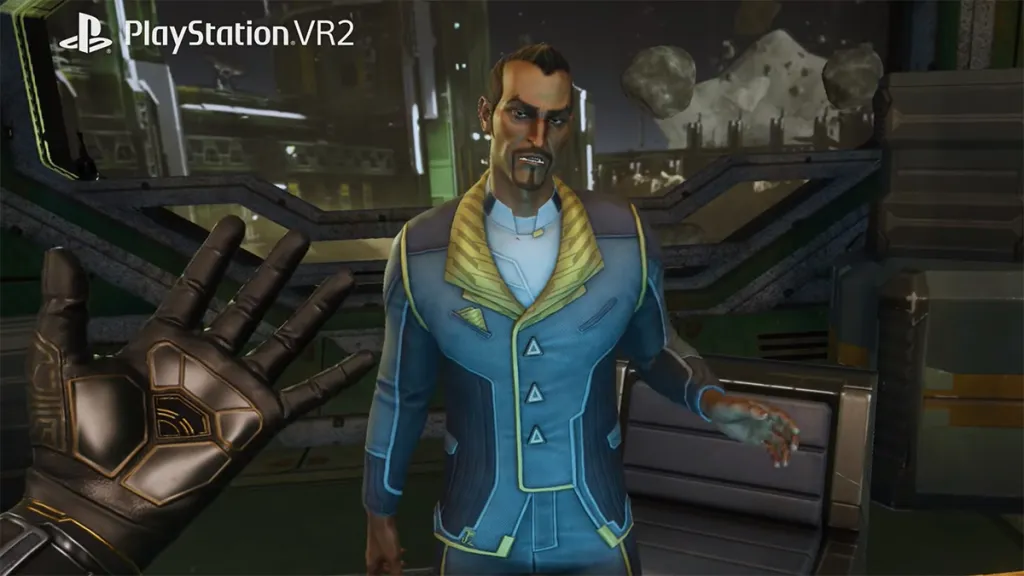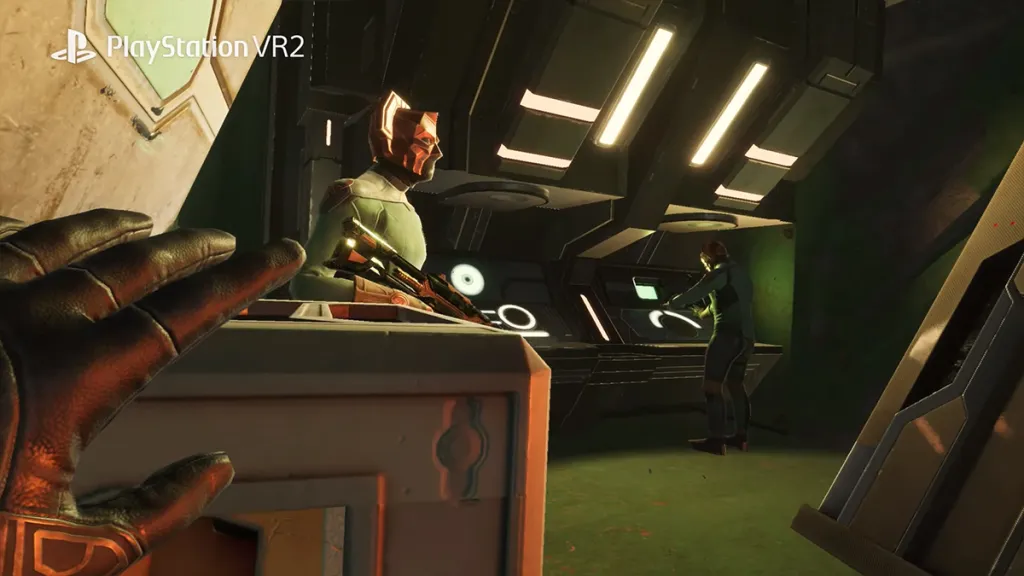Isaac Asimov’s Foundation is one of the seminal pieces of science fiction, as its galaxy-spanning empire influenced other influential works like Dune and Star Wars. And while the series’ film debut fell apart and just recently made it into the television space with Apple TV+’s Foundation, it has taken until now to make the jump to video games with Archiact’s Journey to Foundation. It’s a tall order for a VR game, but one that promises to be a big RPG worthy of the name.
Journey to Foundation isn’t an adaptation of a book in the series, though. It’s telling its own story set in that universe in a time that’s not explained in the books with a protagonist that’s also atypical for the series, as players will be playing a Galactic Empire spy right before the collapse of the Empire, something that is often talked about in books. Lead Level Designer Garett Marks talked about how the freedom to move around in the universe was quite liberating.
“What’s great about it is that we got to formulate our own story within the Foundation universe, which opened up a lot of creativity for us and we weren’t necessarily bound to any previous ideas or anything,” said Marks. “So because we’re based in the story on the periphery of the Foundation universe, we got to explore much more than just being relegated to whatever was in the books. We get to traverse to some really cool environments like this big battle station that the Empire has. That’s not from the books; it’s something of our own creation, and that was really cool.”
The story was one of the three pillars Archiact had in mind when making the game since the narrative has obviously been so key to the Asimov novels. Marketing Director Michael Hammond noted that trying to tell a deep and rich science fiction story was important not only to respect the source material, but also to satisfy the desire for more beefy VR games. As noted by the criticism levied at the PlayStation VR2’s port-heavy launch lineup, players desire experiences that aren’t arcadey shooters or something designed to be played in 20-minute bursts. Hammond even noted that it had a “grand scope,” and the team has only revealed a little bit of what the game has to offer.
The first and second pillars are interconnected since Archiact also wanted to ensure that the game had deep and interesting characters that are all set in a compelling drama. Hammond explained that people within Journey to Foundation aren’t totally evil or wholly good, but occupy a moral gray area that should make them more interesting. And while difficult to discern in the slice the team showed since the dialogue was dominated by temporary text-to-speech audio, Archiact has enrolled a few noticeable voice actors to bring those characters to life like Lost’s François Chau and Jennifer Hale, Commander Shepard herself.

And like Mass Effect (which a few people at Archiact worked on), choices and consequences make up the third pillar the studio is focusing on. This takes form in a few ways, as the demo the team showed had multiple dialogue branches and gave players the choice whether or not to actually kill the greased-up sleaze sitting in his office above the cantina or the scumbag pirates hanging out by the bar. It remains to be seen how deep these choices go, but there will be at least some sort of flexibility within the narrative, which players can usually affect through action and not just dialogue trees.
These moments can mean players can just pull out a gun to shoot an NPC instead of picking a dialogue option to kill that person, but the choices also manifest during gameplay. Journey to Foundation looks to be taking some inspiration from games like Deus Ex: Human Revolution where players can sneak around to avoid guards or resort to gunplay if they get spotted. Mentalic powers offer different ways to deal with enemies, as the one shown in the demo mentally manipulates these suggestable soldiers away from their posts. Another in the trailer has players inflicting pain on their target, and both use the gesture-based motion that VR controllers have.

The stages were smaller in scope and didn’t seem full of different paths to explore, which would be limiting from a gameplay perspective. Stealth games benefit from intricate level design and cramming players down a more linear space would be disappointing. Even though Marks noted that players will constantly be going from dialogue trees to climbing to shooting to stealth in order to switch up the pace, the depth of these systems has yet to be explored. And while it evokes the style of Deus Ex: Human Revolution, that 2012 immersive sim is a high mark for the genre and a lot for Journey to Foundation to live up to.
Journey to Foundation already has a lot to live up to because of the landmark universe it takes place in. Asimov set the standard for sci-fi in many ways with this seminal series, after all. Even though it’s far from its fall release and has the crude, unfinished visuals and jarring temporary dialogue to show for it, there’s an alluring aspect to a choice-driven VR role-playing game. The quote from the book that kicked off the debut trailer posits that success is contingent upon planning and improvising, so hopefully those wise words weren’t lost on Archiact in its journey to create an ambitious VR title.
The post Journey to Foundation Preview: Furthering Isaac Asimov’s Novels in VR appeared first on ComingSoon.net - Movie Trailers, TV & Streaming News, and More.
from ComingSoon.net – Movie Trailers, TV & Streaming News, and More https://ift.tt/Ks8cvaY




.jpeg)
